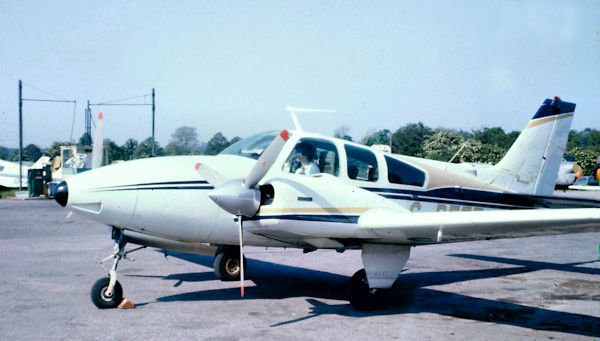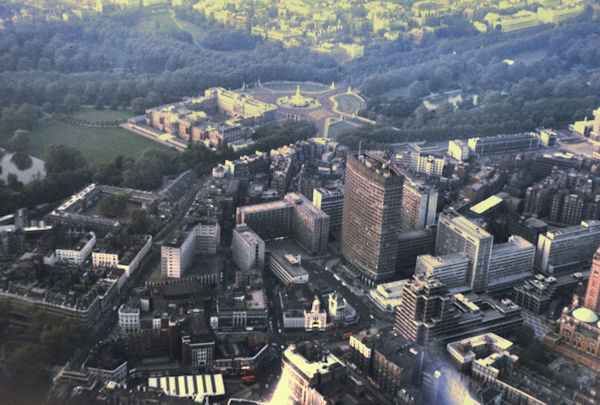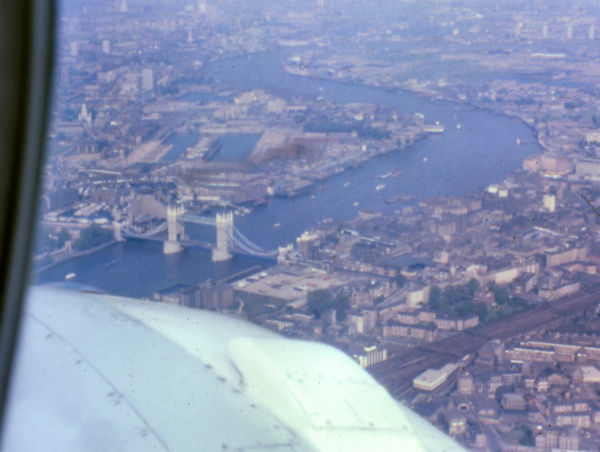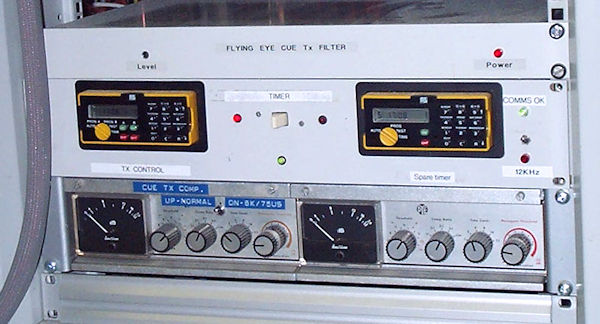Capital Radio - Outside Broadcasts - The Flying Eye
The 'Flying Eye', Capital's traffic spotting and reporting service. In order for a civilian aircraft to be permitted to overfly London generally a twin engined aircraft is needed and a fixed wing plane is faster and more economical to run than a helicopter. During the pre-service assessment flight the traffic reporter to be, apparently not convinced that a fixed wing aircraft was more suitable than a helicopter, asked the pilot how he'd be placed if he wanted to 'hover' over a particular incident for a while. The pilot accepted the challenge and banked the aircraft into a very tight circle so that only sky was visible from the windows on one side and only the ground from the other. I, for one, would rather he hadn't!Weather permitting, traffic reports were made into the breakfast show, and later into the afternoon drivetime show, on weekdays. Additional weekend reports were made for special occasions when traffic flow was likely to be affected, such as the London Marathon.

The Flying Eye
One of the first aircraft used for the service. Initially they were used for general hire at other times so to guard against late return from another booking several were fitted with Capital's aerials. Later a dedicated aircraft, G-FLYI was used for most broadcasts.

Buckingham Palace seen from the air

Tower Bridge and the old East India Docks

Landing
The first air to ground link used a transmitter based on an ex police personal radio, a PYE PF1T, modified for improved audio quality. The aerial for this was positioned centrally underneath the fuselage to prevent the aircraft's wings and fuselage from causing a radio shadow to the ground in some directions. A portable receiver, specially built in-house, gave fixed frequency reception of the FM broadcast service on 95.8MHz and of the private VHF talkback channel. This worked well except on a few days a year when co-channel reception of overseas stations caused interference to broadcast reception on 95.8MHz.
With the imminent introduction of separate breakfast shows on the 1548kHz AM and 95.8MHz FM services changes were needed and a Wood & Douglas UHF transmitter/receiver was bought. This replaced the PF1T for the downlink and added a UHF uplink, sharing the same fuselage aerial, replacing the portable receiver. To provide the audio feed for the UHF uplink a custom control desk was built. Each hour was divided into traffic reporting time slots, alternating between the AM and FM services, and the control desk time switched between the two services for the audio feed to the UHF uplink. Manual override of the switching was provided to cover the inevitability of a presenter overrunning the allotted time slot, and a button superimposed talkback onto the audio feed and at the same time attenuated the programme audio feed.

The Flying Eye cue transmitter control equipment (June 2006)
